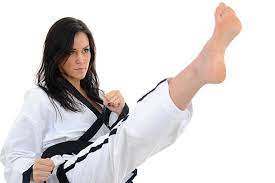by Phillip Starr
And so it was that they began to “camouflage” certain techniques in the forms. The veils were several, which I refer to as “levels” of breaking down the information contained in various forms. I'll cover them briefly here:
The first level I call “Obvious” because what you see is exactly what you get. A punch is no more than a punch and a kick is just a kick. Not every technique or posture contains hidden breakdowns and too many people, in their enthusiasm for unveiling these things get carried away and start “seeing a wolf behind every tree.”
The second level I call “Concealed” and it involved hidden joint techniques and/or chokes as well as holding techniques. These can be rather difficult to uncover; an extensive knowledge and understanding of such techniques is necessary. If you're not familiar with a variety of such techniques, you're not likely to spot them.
The third level is the “Mysterious” level and involved hidden takedowns and throws that are concealed within the form(s). Like the previous level, finding them requires familiarity with such techniques.
The fourth level is the “Dark” level, wherein certain types of blows are applied to certain vital points. The points are mapped out in the form. But most forms do not contain this level of information; only a few do. You must learn to “decode” certain movements as you “read” your form.
To find levels 2 and 3 also require that you recognize certain “red flags”; that is, movements that don't seem to make sense in the form. For instance, in the first form of most karate styles as well as taekwondo -heian shodan (some call it ping-an shodan, and Okinawan styles refer to it as ping-an nidan) and known in taekwondo as chon-ji, there are several red flags right out of the gate:
You step to the left in a forward stance and do a left low block. RED FLAG!
You advance the right foot in a forward stance and execute a right lunge punch. RED FLAG!
You pivot on the left foot, moving to the right. The right foot steps around 180 degrees to a forward stance and do a right low block. RED FLAG!
That didn't take long, huh? Why are these movements red flags? Well...
Movement #1: We're usually told that we're blocking a low level attack coming from the left. WHY would you ADVANCE into an attack to block it? If it's a kick, it'll certainly reach you before you get halfway through your step!
Movement #2: We're often told that following the block, we advance to punch the bad guy. Nah. If you're close enough to block, you're much too close to execute a lunging thrust! WAY too close!
Movement #3: We're told that a second bad guy attacks from the rear, so we turn and block his low-level attack. Then I ask, WHY are you stepping the long way around? It'd be much faster and more efficient to cimple reverse your stance, wouldn't it?
Red flags such as these indicate that the movements are not as they seem. To be brief, the first movement isn't a block at all...it's a pre-emptive thrust. The 2nd and 3rd movements show a peculiar throw, not another block and punch.
Forms are replete with such red flags. You must learn to recognize one when you see one, and then work diligently to figure it out (this is why familiarity with various throws and joint manipulations is so necessary). It is also why each movement in a form is to be done exactly so and why, if you don't understand a particular movement, you mustn't just go ahead and change it.

.jpg)


.jpg)
.jpg)
















No comments:
Post a Comment